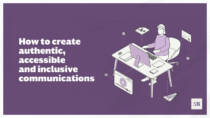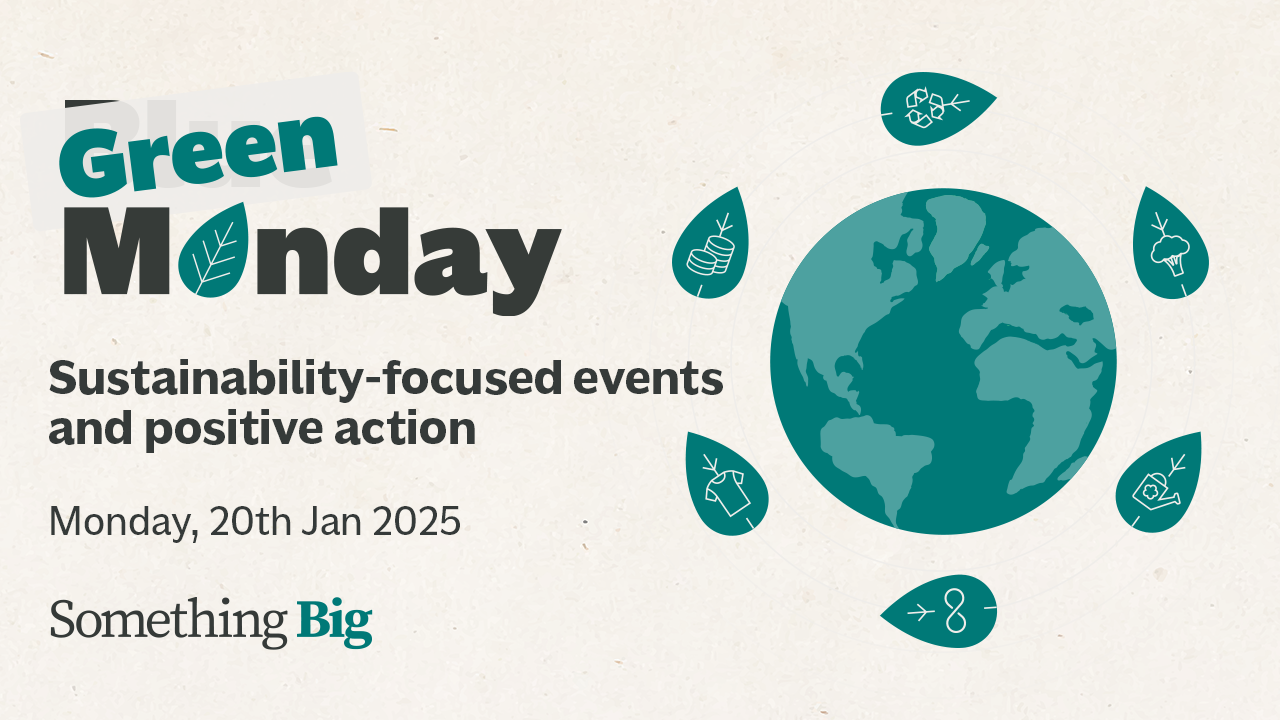How can employees live by values they don’t know, understand or see in action?
By Sally Pritchett
CEO
Clear and role modelled values have the power to shape workplace culture – but a growing disconnect is fuelling mistrust.
We can all agree that having clearly defined and communicated values, that are lived and respected by all and consistently used to drive decision making and guide direction, is the bedrock of a rich workplace culture. Sadly though, there’s a growing misalignment and it’s causing challenges from behaviour and performance to trust and even wellbeing.
So, what’s going wrong? Let’s take a closer look.
The communications gap
There remains a gap in clear articulation and communication of values to employees. According to Gallup, only 23% of employees feel informed about their company’s values. That’s backed up by Cezanne HR who report that 60% of employees don’t know or don’t feel aligned with their organisation’s values.
The culture misalignment
Even when employees do know the values, this can surface other challenges. According to HR Magazine just 18% of employees feel their organisation’s stated values are strongly aligned to the reality of its culture causing them to quickly lose faith in leadership and culture.
The leadership disconnect
The gap widens when it comes to executives and leadership, 85% of whom believe they “effectively communicate the company’s values” whilst according to Ge-Ipsos only 62% of entry level employee agree, adding to mistrust and disengagement.
The unequipped squeezed middle
And when it comes to trust, Line Manager behaviour is seen as the single most important driver of employee trust and yet only 26% of managers say they’ve had any values-based support or communication training.
The burnout risk
Employees need to see how values apply to their day-to-day work, yet Mercer report that one in every five who feel at risk of burnout attribute it to a misalignment between their own values and the values of their employer.
Internal comms leaders might be tired of creating endless values materials that have become wallpaper but not really shifted belief or behaviour, it’s clear that values remain at the heart of workplace culture.
Bringing your organisational values to life
So, what’ the answer? It’s not more posters that launch but don’t land or another top-down broadcast that doesn’t win hearts and minds. Instead, we work with our clients to create deeper storytelling, more inclusive co creation or that enable employees to feel seen and recognised and equip critical middle managers with the confidence to talk with their teams about values in everyday conversations.
Want to dig a bit deeper?
Take our Values Diagnostic – built for internal communicators who want to check what’s landing and where the gaps might be in their values comms. It only takes a couple of minutes and gives you tailored insight with practical next steps. Take the diagnostic.
We see the impact of clarity every day through our THRIVE methodology – our framework for helping organisations build fairer, healthier and happier workplaces through better communication. One of its six pillars is Values – focused entirely on how people connect and align their behaviour to your organisation’s values. If you’re struggling to make your values come to life, this is a good place to start. Read more about THRIVE.
Need to build engagement and alignment to your values?
Exceptional workplace cultures don’t happen by chance, they’re built through intentional, inclusive and inspiring communication.
We can help you:
- Simplify and articulate your existing values in a way that helps everyone understand the expectations on them
- Launch or re-launch your values in a way that brings fresh energy, engagement and alignment
- Keep your values alive through behaviour change, leadership alignment and consistent, embedded communication
There’s no one-size-fits-all when it comes to values comms. That’s why we offer three ways to work with us – depending on where you are now, and where you want to get to.
Activator – Have a story you need to tell? We help simplify complex ideas, shape strong narratives and build campaigns that bring everyone with you. Book a call to discuss your brief.
Pathfinder – Struggling for budget but need direction? Join our community of passionate changemakers and access free guides, tools and events. Sign up to join Work Wonders here.
Co-creator – Already have an in-house team or agency but need fresh thinking? Tap into our advisory services to bring in external perspective and energy. Let’s talk about your challenges, book a call here.
How can your employees support your strategy if they don’t know the destination?
By Sally Pritchett
CEO
Strategic clarity shapes business success – and communication can make or break it.
If employees aren’t clear on where the business is heading, how can they help get it there or contribute ideas to move it forward?
According to the 2024 IC Index, almost one in five employees were not clear on their organisation’s strategy or how their performance could contribute to it. That’s hardly surprising when, according Harvard Business School only 28% of execs and managers can list their organisation’s top three strategic priorities.
Have we got lost in jargon and over-complication to the point where we’ve lost the golden thread? Or is the world moving so fast that yesterday’s strategy is no longer relevant, and we’re all simply trying to keep up?
Whatever is causing this disconnect, the result is the same. Strategies don’t fail because they’re wrong, they fail because they’re misunderstood.
This is where communication comes in. Effective and impactful communication can translate strategy into something meaningful and memorable for employees to get behind.
If strategy is the destination, communication is the map
A quick way to find out how well you’re communicating your strategy might be to choose a handful of randomly selected cross-functional and frontline employees and ask them to describe what your business is trying to achieve in one sentence. Then ask how their own role, work and performance contributes to that goal. And if you’re feeling brave, ask when they last thought of a way the business could get there quicker – and who they told.
Want to dig a bit deeper?
Take our Roadmap diagnostic – designed for internal comms professionals who want to understand what’s landing and where their strategy comms might need a boost. It only takes a couple of minutes and gives you tailored insight plus practical next steps.
We see the impact of clarity every day through our THRIVE methodology – our framework for helping organisations build fairer, healthier and happier workplaces through better communication. One of its six pillars is Roadmap – focused entirely on how people connect with your organisation’s direction and understand their role in getting there. If you’re struggling to make your strategy stick, this is a good place to start. Read more about THRIVE.
Need to build clarity and momentum around your strategy?
Exceptional workplace cultures don’t happen by chance, they’re built through intentional, inclusive and inspiring communication.
We can help you:
- Set your strategy up for success by developing a clear narrative with compelling language and simple, memorable stories
- Launch it with impact through creative internal campaigns that get people engaged from day one
- Keep it alive through behaviour change, leadership alignment and consistent, embedded communication
If you’re looking to scale up how you communicate your strategy and direction, there are three ways we can support you:
Activator – Have a story you need to tell? We help simplify complex ideas, shape strong narratives and build campaigns that bring everyone with you. Book a call to discuss your brief.
Pathfinder – Struggling for budget but need direction? Join our community of passionate changemakers and access free guides, tools and events. Sign up to join Work Wonders here.
Co-creator – Already have an in-house team or agency but need fresh thinking? Tap into our advisory services to bring in external perspective and energy. Let’s talk about your challenges, book a call here.
Employee engagement is falling in 2025 – is it time for a workplace reset?
By Sally Pritchett
CEO
The data paints a clear picture of a workplace under pressure. Strategy & Insights Director Tor Radford explores whether this could be the reset moment we need.
Let’s face it, the state of the nation and the world is pretty dire right now. Every which way we turn, there are reports of uncertainty over jobs, the rising cost of living and how unhappy, stressed and lonely we are.
Each year, Gallup’s State of the Global Workplace report provides an important snapshot of how people are feeling at work. It’s no surprise that this year it paints a troubling picture. Engagement is down. Manager wellbeing is seriously declining. There is an emotional cost of work. And the underlying cracks in the employee experience are coming harder to ignore.
But Gallup’s findings are only part of the story. Insights from Accenture Life Trends 2025, Randstad Employer Brand Research, and GWI’s Redefining the Workplace show a wider shift underway. People aren’t just rethinking how they work. They’re rethinking what work means.
What people want from work is changing
To understand where engagement is heading, we need to understand what people are really looking for in their working lives.
Randstad’s global data shows employees are no longer driven by salary alone which is surprising in itself given how much costs are rising. Work-life balance, wellbeing, purpose and values are just as important – especially for younger workers.
Work-life balance now tops the list of reasons people leave a job. Gen Z and Millennials rate mental health support and flexible working as key priorities. And while most employers believe they’re delivering on these needs, employees don’t always agree. There’s a growing gap between the promise and what employees actually experience.
Work isn’t just a contract anymore
Accenture describes this change as a shift from transaction to relationship. As they put it, “work has to earn its place in people’s lives now.”
People want roles that fit around life, not the other way around. They want to feel involved, understood, and part of something meaningful. And they expect their managers to reflect that by being human and leading with empathy and clarity.
In this context, Gallup’s reported drop in engagement – from 23% to 21% – is more than just a decline. It’s part of a much larger cultural shift of how we are seeing the role of work in our lives.
“We believe that leaders who see the value of effecting positive change and creating the conditions that naturally raise enthusiasm in their teams will emerge as winners. Those who ignore what’s happening will increasingly notice a lack of dignity at work, resulting in poor culture, work and motivation—and worse outcomes for customers and business growth”
Accenture Life Trends 2025
Managers are struggling to hold it all together
Gallup’s data points to one particular group under growing pressure: managers.
Engagement among managers has dropped to 27%. The decline is even more significant for younger managers and for women.
Managers are expected to drive performance, care for their teams, adapt to change and absorb stress, often without the clarity, support, training or capacity they need.
Why does this matter? Because managers are still the single biggest factor in team engagement – Gallup attributes around 70% of the variance of employee engagement outcomes are down to manager effectiveness. They are the glue that often holds teams together. When they’re disengaged, it cascades. And when they’re unsupported, they struggle to carry both performance and people.
The emotional impact is becoming clear. Life satisfaction is falling. Stress, sadness and loneliness remain high, particularly in hybrid and remote teams. For many managers, the pressure is becoming even harder to sustain and something has to give.
Meanwhile, Gen Z are rewriting the rules
GWI’s Redefining the Workplace report offers another lens. Gen Z haven’t just entered the workforce. They’re reshaping it.
They’re less focused on climbing a corporate ladder and more likely than other generations to value side hustles, creative projects and autonomy. They’re actively seeking connection and community at work, not just a role or salary. And they’re choosing balance over burnout.
They also expect a say in how work works. They want to co-create their role or experience, not just be given a handbook. In that sense, they’re echoing Accenture’s observation: Gen Z employees aren’t just looking for a leader in the workplace, they’re looking for partnerships.
The disconnect is growing, but it’s not just about work
Taking a wider view, this isn’t only a workplace issue. It does seem to be societal.
According to recent reporting in The Guardian, over five million UK adults are now facing financial, housing and health insecurity all at once. That includes many in work. These overlapping pressures will affect how people show up, how they cope and how they engage.
When external stress is high, the internal support systems of work become more important. And when they don’t hold up, employees switch off – emotionally and mentally.
Where do we go from here?
The message across Gallup, Randstad, Accenture and GWI is consistent. Start with people. Rebuilding engagement isn’t about new initiatives or a complete rebuild of your internal structures. It’s about strengthening relationships and routines that shape the everyday moments for employees.
That includes:
Support for managers. Many haven’t been trained. Helping them lead conversations, give feedback and recognise what they need in the moment could be a simple way of creating quick impact and help them feel better supported.
Clearer expectations. Employees need clarity – on what’s expected of them, how their work connects to purpose and what success looks like. That applies just as much to a desk-based employee as to someone on the frontline.
Making wellbeing real. Employees are discerning. Wellbeing can’t just live in a policy or on an intranet page. It has to show up in how people are managed, supported and recognised day-to-day – not like a last resort.
Personalised experience. EVP can’t be one-size-fits-all. Different generations, job types and life stages value different things. Communications and touchpoints need to flex accordingly.
Space to lead, not just deliver. Managers can’t engage others if they’re constantly firefighting. That means protecting their time, wellbeing and ability to support and lead their teams – not just hit targets.
What this means for internal communicators
For comms teams, this moment in time is about more than getting messaging right. It’s about helping businesses reconnect with employees – with clarity, consistency and care.
That might mean:
- Helping leaders speak more empathetically
- Creating moments for listening and dialogue, not just updates
- Making the EVP visible in daily experiences
- Designing comms that build trust, not just awareness
- Creating channels that build connection, not just cascade information
Because when expectations are this high, the way we communicate has to evolve too.
This could be the reset we need
The signals are everywhere. Engagement is dropping. Expectations are shifting. People are tired, but they’re also clear on what they want. And whilst the data may look bleak, it also points to a clear path forward. If this IS the reset moment, I’m not sure we can afford to ignore it.
If you’re rethinking how to connect with your people, you’re not alone. We help organisations translate insight into communication strategies that support culture, engagement and change. Ready to reset how you communicate? Let’s talk.
3 Workplace Culture Challenges - and How Communication Can Solve Them
By Sally Pritchett
CEO
The workforce is burning out, disconnecting and craving more meaning – here’s how communication can help.
There’s a lot of noise about the state of work right now. If your people are coasting, quitting or quietly burning out – it’s not a mystery. It’s a message. The way we work is out of sync with what people need. Disconnection, overwhelm and a lack of purpose are showing up everywhere – and communication can either fuel the problem or be part of the solution. We’ve identified the three biggest forces shaping the workplace in 2025 – and how communication can help you face them head-on.
Harmony: How we connect our lives with our work
For many employees, work has become overwhelming – bleeding into every corner of their lives. What was sold as flexibility has morphed into an always-on, hyper-connected culture. Are we working from home, or just living at work?
In 2024 we saw headlines about ‘quiet quitting’ claiming that those working from home were lazy and taking advantage of being invisible from their managers. They were skiving off. This year we’ve seen headlines framing the challenge as ‘the great detachment’. This isn’t about being people lazy, of course any journalist or manager can find the one who has tuned out and is working the system, disengagement is still rife. No, this is about a bigger challenge. That of boundaries.
In 2024, headlines about ‘quiet quitting’ painted remote workers as lazy, taking advantage of being out of sight from their managers. Workers were said to skiving off and doing the bare minimum. This year, the narrative has shifted to ‘the great detachment’. But really this isn’t about people being lazy. What we’re really seeing is a bigger challenge: a struggle with boundaries.
Organisations that deserve it – the ones that show appreciation, invest in culture and prioritise wellbeing – have always seen discretionary effort from their people. And they still do. It just looks different now. Managers used to be able to see the early starters and the last ones to leave the office in the evening. In a hybrid world, discretionary effort hasn’t disappeared, it’s just showing up in new ways. Employees are staying connected, replying to messages and taking calls well outside working hours, often blurring the line between commitment and burnout.
But here’s the thing, our employees need their rest and downtime as well. Right now, 80% of employees globally feel at risk of burnout stating the main contributors as financial strain (43%), exhaustion (40%), and excessive workload (30%). The workplace is being described as ‘draining and impersonal’. 37% of people say work stress has taken such a toll on their mental health that it’s contributed to substance use or even thoughts of suicide.
Given an organisation is only as healthy, innovative, productive and ultimately successful as its people, this is an urgent problem. Employees are no longer seeking work and life balance; they’re looking for a harmony between the two. They’re offering up discretionary effort and flexibility with their employers, on the condition of having healthy boundaries.
What’s the role of communication in workplace harmony?
Information and communication overload is a real threat. While tech tools like instant messaging are great, they should come with a massive health warning. We’re busy creating not only an always on, hyper connected, hivemind culture, but also one where we appear to be competing with super computers in our thirst for knowledge. Communicating everything, all the time, to everyone. We can see the funny side of influencers who can’t eat their food before photographing it, or families who plan days out around the perfect Instagram photo. But the workplace has become just as noisy. Relentless meeting schedules, fragmented communication channels, and expectations for instant replies constantly distract employees – making it harder to focus, concentrate, and do deep work.
Like a car in the wrong gear, the machine is burning out while also not going as fast as it could.
This is a huge opportunity for communicators to step up and lead the way. From managing channels – and even closing some down – to setting clear communication protocols and etiquette everyone can follow. From protecting time for deep work to upskilling teams in more effective communication and smarter use of tech. The goal? To reduce the noise, not add to it.
Reducing communication overload and cutting through the noise isn’t just good practice – it’s a chance for communication leaders to be seen as true enablers of productivity, helping get the organisation back in gear.
Loneliness: How we connect with those around us
Despite this always on, hyper connected world we’re in, loneliness is at an all-time high. Globally, 20% of employees report feeling lonely during much of their workday, with younger employees feeling this the most. You’d be forgiven for thinking this is connected to the increase in working from home, however this doesn’t appear to be the case. In fact, mandatory back to the office protocols have magnified this sense of loneliness for many by demonstrating the culture gap. Employees say they feel less lonely at home with a pet companion than they do in an office where they don’t feel they belong.
Like ‘quiet quitting’, the rise in loneliness has deeper societal roots. A fragmented work culture, overwhelming workloads that leave little time for human connection, an ever-increasing pace of work, digitised interactions and frustration with slow progress on inclusion all contribute to employees feeling more disconnected from their organisation – and each other.
Employees need to feel seen, heard and connected in a meaningful way. Despite some suggesting the contrary, the business case for inclusion and belonging has never been stronger. The gap between senior leaders and the frontline continues to plague cultural tensions and has widened post-pandemic, and so organisations need to be taking proactive steps to reduce this disconnect.
What’s the role of communication in workplace loneliness?
Communication has always had the power to shape positive, connected workplace cultures. But today, with rising levels of loneliness, that role is more urgent – and more critical – than ever. The call for communicators to step in is loud and clear.
There are three key priorities communication leaders should be actively focusing on:
1. Shift from monologue to dialogue
Move away from top-down messaging and create more two-way communication across the workforce – through employee voice platforms, ERGs, surveys, listening forums, and more.
2. Create meaningful moments for connection
Build real opportunities for people to come together – from cultural anchor office days to company conferences and team events.
3. Drive inclusion and belonging
Keep working to build a culture of equity, respect, and appreciation where everyone feels they truly belong.
Communications leaders have a powerful opportunity to bring their organisations back together in a meaningful way. By helping teams reconnect, they can ease the tensions surrounding hybrid working and return-to-office mandates, many of which have been driven by a focus on visibility, rather than productivity or culture.
Purpose: How we connect with the world around us
Work must be more than a means to pay the bills. If employees are going to devote so much of their lives to their work, they want to feel connected to something meaningful. Aligned values and making a difference is no longer a nice to have for employees, it’s a growing necessity. 48% of employees say that connection to their work impacts their decision to stay or leave a job. It’s clear that purpose is not simply a nice idea but a commercial imperative for businesses and employees, who are expecting the opportunity to make a positive impact through their work.
Purpose-led organisations focus on the ‘why’ of their existence – like Tony’s Chocolonely who aim to end exploitation in cocoa. It’s a simple statement that encompasses why they make and sell chocolate delivered through a fairer supply chain as well as enabling other organisations to use their equitable and slave-free cocoa supply chain. Tony’s might be a trailblazer in purpose and many organisations have evolved out of necessity or a gap in the market – like Toys ‘R’ Us, whose founder capitalised on the post war baby-boom by selling baby furniture and soon after, toys. Despite this commercial driver for starting out in business, Toys ‘R’ Us had a fundamental brand belief that ‘children should be allowed to be children’ a clear opportunity to connect their employees to a job beyond stacking shelves and selling toys, their role was really to make their stores feel magical.
What’s the role of communication in purpose?
Clear communication of an organisation’s vision, mission, beliefs and values is nothing new. There isn’t an Internal Comms leader who hasn’t tackled the classic ‘values refresh’ project. But today, it’s not just about articulating commercial goals, we need to help employees connect with the bigger picture. That means showing the real-world impact the organisation is striving to make on society and the planet.
What difference is the business trying to create in the world? How is that purpose tied to the organisation’s everyday role in its industry? What isn’t working in that industry – and how is the company stepping up to lead change? And how does its CSR or charitable work play into that wider ambition? These connections are what bring values to life – turning them from posters on a wall into a shared sense of meaning and motivation.
Most organisations deliver CSR activities, donate to charities and offer paid for volunteering days but the benefits in employee morale and retention only come when we connect the workforce with this work and inspire them to get involved. Communications leaders have a great opportunity here to unleash this missed potential for their organisations.
How we can help you build connection, clarity and meaning through communication
At Something Big, we know from experience that communication has the power to solve some of today’s biggest workplace challenges – from blurred boundaries and burnout, to loneliness and disconnection, to lack of meaning and motivation. Here are three ways we can help:
Activator – Storytelling and creative services
You’ve got a message that matters – we help you bring it to life. Whether you’re setting new boundaries, supporting wellbeing or bringing purpose to the forefront, we create campaigns, brands and internal content that inform, inspire and connect.
Pathfinder – Tools and resources
You’re working to create a more connected, human workplace – and we’ve got the tools to support you. From culture diagnostics to comms audits, practical guides and peer learning spaces, we’ll help you take steady, confident steps forward.
Co-creator – Advisory services
You know culture and connection matter – but you’re not always sure where to begin. Our team of strategists bring deep insight and hands-on experience to help you shape clear, practical communication strategies that support balance, belonging and purpose.
The 4 Cs of Culture: Getting to the truth of your workplace culture
By Sally Pritchett
CEO
Discover how to spot the real signs of your workplace culture using our 4 Cs framework.
Culture is one of the most important things for businesses of all shapes, sizes and sectors to invest in and get right. Unfortunately, it’s also one of the hardest things to define, measure or pin down. It’s not a policy, a strategy, a set of perks. You can’t write it in a document or stick posters on the walls that will magically become your culture. Culture is the reality of how people feel, act, speak and show up every day. And worse still, it’s fluid, slippery and changes and evolves quickly.
When it comes to measuring workplace culture, we often find ourselves referring to employee survey data, retention rates, employee reviews, evidence of loyalty or even discretionary effort. None of which is wrong – they’re all good sources of data – but this analysis takes time, relies on employees feeling safe enough to give their honest opinions, and the results are usually reflective of just a snapshot in time.
If you’ve just arrived at a new organisation and are trying to identify where the culture sits right now or you’re on a mission to improve your organisation’s culture, here’s how we approach assessing a culture reality.
At Something Big, we’ve boiled it down to four key things, we call them the 4 Cs of Culture:
1. Communication
Everything starts with language. The tone, terminology and openness of how an organisation communicates all reveal what a company really believes. From Board meeting minutes to social media posts, from Town Hall scripts to internal emails, and even the naming conventions of projects – all of these give clues about how the organisation values its people.
How does the business refer to its people? Are they employees, colleagues, staff… or resource? Is the language even consistent across different departments? Are employees seen and spoken about as genuine contributors, partners, and individuals? How is their work viewed, is it respected for the expertise it takes, or is it seen as unskilled? What conversations happen when people leave the business? What are the key words that keep popping up? How would you describe the tone? When you reflect on communication, how do you feel?
2. Comprehensive
When a business cares about its culture and in turn has a strong one, it runs like a golden thread throughout everything they do. From hiring, onboarding, customer interactions, decision making, leadership behaviour, the approach to policies and even the way the office operates. When culture is rich it leads the way. When trying to assess a culture, looking at things like job adverts, policies, approach to learning and development and where inclusion sits on the agenda all help build up a clear picture of culture.
3. Consistency
Culture isn’t a trend. It can’t be picked up and put down. It lives on regardless of whether it’s on this month’s agenda or not. When assessing culture, it’s really important to look at it over time, the good times and more challenging ones. How did the company treat its people during the pandemic, when times were tough and difficult decisions had to be made? Or when times were good and they could celebrate and reward hard work? Companies that truly get it invest consistently knowing how fragile culture is and what it takes to protect it.
4. Commercial Connection
Culture isn’t just nice-to-have, it’s a commercial fundamental. You don’t have to look far to find commercial benefits to have a strong culture. Whether it’s about attracting and keeping talent, avoiding the cost of constant re-training or absenteeism, or driving better service through motivated employees – culture plays a vital role. It also protects brand reputation and encourages discretionary effort and advocacy.
Organisations that get it know that investing in their culture reaps reliable ROI and have robust approaches to employee communication, learning and development, employer brand and EVP, reward and recognition, employee appreciation and more.
How well can you define the reality of your culture? Are you clear on where you should be focusing to drive your culture in the direction you want it to go. How well can you identify the areas that are undermining your culture?
If you’d like some help assessing your culture as it really is, book a call to chat to one of our culture experts here.
Workplace communication as a catalyst for inclusion and racial equity
By Sally Pritchett
CEO
Discover how intentional communication can drive real inclusion and racial equity in your workplace.
To mark the International Day for the Elimination of Racial Discrimination, in partnership with Race Excellence we hosted a powerful conversation exploring how communication can drive inclusion and racial equity in the workplace.
The session offered valuable insights into the role communication plays in creating fairer, more inclusive environments – where everyone feels heard, respected, and empowered.
Here are some of the key takeaways:
Make space for timely conversations
Having open, honest conversations at the right time matters. When significant events happen – globally or within your own organisation – your team are affected. Proactive communication helps people feel supported and creates space for reflection, empathy, and action.
Bring the right voices into the room
Involving senior leaders, subject matter experts, and individuals who can influence others ensures conversations lead to action. To create meaningful change, the right people need to be in the room – especially those with the authority to make decisions.
Prioritise active listening
Sometimes the most powerful part of a conversation is the silence. Good communication isn’t just about what you say – it’s also about how well you listen. Give people space to think. Avoid jumping in with answers. Create opportunities for reflection and let quieter voices be heard.
Choose your channels carefully
Communication isn’t one-size-fits-all. Consider how best to reach your audience – whether it’s workshops, one-to-ones, shared documents, or live conversations. Be thoughtful about the tools and platforms you use.
Keep your messaging clear and constructive
Whether you’re talking about policy change, allyship or team culture, everyone should leave the conversation knowing what comes next. Avoid jargon, lead with clear questions and make sure conversations end with actions.
Maintain respect
Respect should sit at the heart of every conversation. Even when opinions differ, it’s possible to challenge constructively and keep doors open. Communication that focuses on shared goals, solutions and unity is far more effective than blame or defensiveness.
Communication shapes inclusion
Words matter, so when language is restricted or policed, the impact can be exclusion, disconnection, and fractured identities. In many workplaces, race is still seen as too complex or risky to talk about – leading to silence, self-censorship, and missed opportunities to understand each other.
Communication done well, though, can flip that script. It can become a tool for liberation – making space for lived experiences, validating identity, and giving employees permission to bring their full selves to work. Inclusion doesn’t come from silence, it comes from stories, language, and meaningful dialogue.
Telling isn’t enough
Workplace communication often defaults to telling – issuing updates, sharing top-down messaging, or rolling out policies. But simply telling people what to do or believe isn’t enough to create change. It can even do more harm than good if it overlooks how people are really feeling.
To make a real impact, communication needs to do more than inform. It needs to listen, educate, inspire, and reassure. It needs to raise awareness in a way that connects with people’s emotions – not just their inboxes. It needs to make space for difficult conversations, reflection, and vulnerability.
Say the thing. Don’t dodge it.
One of the biggest communication challenges in DEI is avoiding “the elephant in the room.” Whether it’s a disbanded ERG, a delayed strategy, or an external event that’s affecting your teams, silence creates space for mistrust and disengagement.
Filling that silence with open, honest, human communication – even when the message is tough – builds credibility and trust. Employees are adults. Treating them as such by being transparent about decisions, even when there’s no perfect solution, goes a long way.
Surface the human library
Your organisation is full of unseen stories. These lived experiences are powerful, personal, and valuable. When people share them, they create connection, understanding, and culture change. But those stories don’t surface on their own. You need to make space for them, and ensure people feel safe and supported to speak up.
Culture and communication go hand in hand
If you want honest conversations, you need a culture that supports them. That means:
- Being clear on the purpose of conversations
- Making sure the right people are in the room – especially those with decision-making power
- Building psychological safety so people feel confident to speak up
- Leading with questions, not assumptions
- Ending with action, so people know what’s changing and why
When we use communication intentionally, we create momentum. When we pair that communication with inclusive culture, we create change.
We’d like to thank Ann and Gifford from Race Excellence for sharing their insight. Race Excellence partners with organisations to embed diversity, equity, inclusion and belonging into the heart of their business – supporting CEOs, Boards, employee networks and HR leaders to take a sustainable and innovative approach to inclusion. Learn more about Race Excellence.
If you’re looking for support with harnessing the power of communication to create a more equitable workplace, then talk to us.
Watch the webinar: Communications – a catalyst for inclusion and racial equity
The key trends shaping happy and high-performing teams
By Sally Pritchett
CEO
What does it take to build a workplace where happiness fuels high performance?
What does it take to build a workplace where happiness fuels high performance?
To celebrate B Corp Month, our CEO, Sally Pritchett, joined a panel of B Corp leaders and industry experts at Uncommon Holborn to explore just that. In conversation with Bleddyn Harris, Head of People and Culture at B Lab, the discussion revealed key trends shaping the future of work and what businesses can do to create thriving, engaged teams.
Rethinking workplace culture
Too many businesses are still stuck in an outdated industrial mindset – viewing employees as cogs in a machine that need to be optimised and replaced when they break. But workplaces are ever-evolving living ecosystems, filled with diverse identities, ideas and experiences.
To create a culture where employees thrive, businesses must:
- Listen deeply – go beyond surveys to understand the real undercurrents shaping employee experience.
- Make change an engaging process – design change communications to be creative, inspiring and participatory.
- Enable flow states – consider how workspace design, communication styles and celebrations contribute to culture.
- Embrace conscious leadership – leaders should create a positive and collaborative environment where everyone can thrive.
Tackling loneliness
Loneliness has become a big and unfortunate trending topic, but it is important to know that it is not caused by remote work – it’s caused by fractured cultures. Return to office mandates are part of the loneliness problem; what could be lonelier than feeling disconnected from your colleagues while sitting in a buzzy office? Communication plays a vital role in bridging that gap.
Valuing feedback
Surveys, suggestion boxes and employee groups may seem like standard tools – but they only work when they are inclusive and transparent.
Key principles of effective feedback include:
- Providing multiple ways to contribute – recognising potential language and other barriers, offering different ways to feedback.
- Appointing spokespeople – ensuring non-native speakers and those not comfortable with speaking up can have a voice.
- Creating a genuine feedback loop – sharing all survey results, addressing difficult feedback and being honest when changes aren’t possible.
- Targeting disengagement – where you are seeing signs of disengagement, for example low survey response rates, investigate the cause. Would tailored training or perhaps surveys in multiple languages or formats help?
Communicating through change
During times of change, clarity and consistency are everything. Strong leadership voices, regular updates and a visible presence – with an example given of a CEO spending time working from reception – can create a sense of stability.
Humans are natural storytellers. If leaders don’t shape the narrative, employees will create their own – and that’s where misinformation can spread. Tapping into the stories that drive purpose fuels both innovation and productivity.
Creating human-centric work environments
A desk and chair are no longer enough. The spaces we work in play a crucial role in collaboration, focus and connection. The venue itself, Uncommon’s Holborn location, is a perfect example of how human-centric design, greenery and calming aesthetics can enhance workplace wellbeing.
Modern workplaces need to provide flexibility, offering spaces that support both deep work and collaboration. Thoughtful design can create an environment that facilitates productivity and meaningful interactions.
Supporting volunteering programmes
Businesses offering paid volunteering days is on the rise, but offering the benefit doesn’t automatically result in take-up – businesses need to actively encourage participation.
Volunteering isn’t just good for the individual – it strengthens engagement, productivity and workplace culture. It tackles loneliness, builds community and enhances wellbeing. The key is making it easy for employees to get involved.
Want to see how we helped a client inspire over 120,000 employees to volunteer? Find out more here.
Overcoming communication overload
Communication tools like video calls and instant messaging were meant to streamline work. Instead, they’ve created a culture of constant communication – where employees are drowning in notifications, meetings and distractions. The workplace is now like a crowded room where everyone is talking at once. It’s affecting productivity, wellbeing and relationships. To fix this, businesses must:
- Set clear communication guidelines – establish expectations for response times and message urgency.
- Encourage mindful communication – leaders should model concise, purposeful messaging.
- Reduce unnecessary noise – assess which platforms are essential and eliminate redundant ones.
Communication: the key to workplace happiness and performance
At the heart of all these trends lies communication. Getting it right means understanding what, when and how to communicate – ensuring efficiency without overload. Talk to your teams, listen to what they need and create a workplace where communication fuels success rather than hinders it.
A happy, high-performing team isn’t built overnight. But with purposeful communication, inclusive culture and thoughtful leadership, businesses can create environments where people truly thrive.
At Something Big, we help businesses communicate with clarity, creativity and inclusivity – making workplaces fairer, healthier and happier. From shaping strategy and change programmes to fostering wellbeing and inclusion, we work with some of the world’s best workplaces to engage leaders, managers and frontline teams through impactful communication.
Ready to build a thriving workplace? Let’s talk.
Guide: How to create authentic, accessible and inclusive communications
By Sally Pritchett
CEO
Discover how to create communications that connect with audiences through authentic, accessible, and inclusive messaging in this essential guide.
Inclusive, accessible, and authentic communication has the power to connect, inspire, and drive meaningful change. This manual, How to Create Authentic, Accessible, and Inclusive Communications, is an essential resource for anyone striving to create messaging that resonates with diverse audiences and delivers real impact.
Packed with insights, guidance, and actionable tips, this guide will help you ensure your work is inclusive, accessible, and authentically representative. Whether you’re looking to deepen your understanding, refine your communication approach, or start embedding inclusion into your processes, this manual provides the tools and inspiration you need.
In this manual you’ll discover:
- Why inclusivity in communications matters and how it drives connection and impact.
- What inclusive communications should look and feel like with practical examples.
- How to foster diversity and authentic representation while avoiding tokenism.
- Practical tips for accessibility making sure your communications reach everyone.
- Advice on using AI ethically to support inclusivity and authenticity.
- How to build an inclusive mindset and embrace continuous improvement
Download the guide now and start creating communications that inspire change, connect with audiences, and make a lasting difference.
Choose the right version for you
We’ve created several versions of the manual, each with different accessibility features. Please choose the option that works best for you. If you need assistance navigating these options, don’t hesitate to get in touch with us hello@somethingbig.co.uk.
PDF version
A PDF that can be read out by a screen reader
Dark mode PDF
A PDF in dark mode, that can be read out by a screen reader
Audio PDF
A PDF with the option to be read aloud by an AI voiceover
Video audio
A video of the manual, read by an AI voiceover
Creating cultures of neuroinclusion
By Sally Pritchett
CEO
Discover how fostering neuroinclusion in the workplace can build an environment where all employees thrive.
Discover how fostering neuroinclusion in the workplace can build an environment where all employees thrive.
Diversity of thought and minds can bring fresh perspectives and innovative ideas. According to Deloitte, “organisations that make an extra effort to recruit, retain, and nurture neurodivergent workers can gain a competitive edge from increased diversity in skills, ways of thinking, and approaches to problem-solving”. With an estimated 15-20% of adults being neurodivergent, businesses that fail to support neurodiverse individuals risk falling behind. It’s essential for businesses to support the neurodivergent community by making necessary accommodations for everyone, regardless of diagnosis.
We were delighted to have Becs Tridgell from Autism Unlimited join us for our most recent ‘Tune In’, session, where we tuned into the voices of the neurodivergent community, looking to learn practical steps and strategies to foster a neuroinclusive workplace culture that values and supports every employee.
Watch the video below for a full recap, and check out the session highlights and key insights below:
The benefits of a neuroinclusive workforce
Neurodivergent employees bring unique strengths that can transform workplaces. Skills like hyper-focus, creative thinking, innovative problem-solving, empathy, and detailed analysis are just a few examples of the value neurodivergent individuals can offer when supported effectively.
However, these strengths can only thrive when workplaces address the challenges neurodivergent employees face. By fostering a culture of neuroinclusion, organisations unlock not only individual potential but also greater collaboration, loyalty, and long-term success.
Common challenges faced by neurodivergent employees
Many neurodivergent employees encounter significant barriers in the workplace. Traditional recruitment processes, such as interviews that emphasise eye contact or sociability, often overlook the strengths of neurodivergent candidates.
Masking – where individuals consciously or unconsciously hide their neurodivergent traits to appear more “typical” – is another challenge. While masking can help individuals fit into workplaces that may not be inclusive, it often leads to exhaustion, burnout, and reduced engagement.
Sensory sensitivities, like difficulties with noise, lighting, or smells, can also make everyday tasks unnecessarily difficult. For example, an open-plan office might create challenges for someone with auditory sensitivities, reducing their ability to focus or perform at their best.
The power of effective communication
Communication is a cornerstone of neuroinclusion. By prioritising clarity, consistency, and compassion, organisations can create an environment where neurodivergent employees feel understood, supported, and empowered.
Clarity
Clear communication ensures that everyone, regardless of neurotype, can engage fully. This includes:
- Sending agendas in advance of meetings
- Chunking information into smaller, manageable parts
- Using visual aids to support verbal explanations
- Providing assistive technologies
Consistency
Consistency builds trust and reliability. Neurodivergent employees often thrive in environments where expectations and processes are supported and made clear. Examples include:
- Assigning a buddy to new employees for ongoing support
- Standardising accommodations, like offering quiet spaces or noise-cancelling headphones
- Implementing policies to create sensory-friendly environments, such as discouraging strong smells in open-plan offices
Compassion
Compassionate communication acknowledges individual needs and ensures everyone feels valued. Tailored adjustments might include:
- Allowing regular breaks for employees who need to manage energy levels
- Providing specific ergonomic tools, like supportive chairs or coloured overlays
- Offering flexibility in how tasks are completed, enabling employees to work in ways that suit their strengths
Practical steps to build a neuroinclusive workplace
Neuroinclusion requires thoughtful, tailored adjustments that enable everyone to thrive, not just the neurodivergent.
Some practical steps include:
- Rethinking job design: Tailor roles to individual strengths rather than expecting everyone to fit into rigid job descriptions.
- Creating dedicated quiet spaces: Offer areas where employees can decompress or work in silence.
- Normalising accommodations: Provide tools like noise-cancelling headphones, visual aids, or flexible schedules to support productivity.
- Improving recruitment processes: Redesign interviews to focus on practical skills rather than sociability or traditional cues like eye contact.
- Fostering a supportive culture: Encourage open dialogue about neurodiversity to reduce stigma and build trust, ensuring employees feel safe to share their needs.
While supporting neurodivergent employees is both a legal and moral obligation – it’s a strategic advantage too. Through education, adjustments, and open dialogue, we can create workplaces where every mind is valued, and every employee can thrive.
If you need support on your journey to building a more neuroinclusive working environment, we’re here to help. Whether it’s developing culture change programmes, creating communication campaigns that drive inclusion, or ensuring your communications are accessible to all, we can provide the expertise you need. Talk to us today to start making a meaningful difference in your workplace.
Webinar: Empowering workforces to be neuroinclusive
2025 Workforce Trends Every Communicator Needs to Know
By Sally Pritchett
CEO
What does 2025 have in store for the workplace - and how can effective, inclusive communication help navigate the challenges ahead?
What does 2025 have in store for the workplace - and how can effective, inclusive communication help navigate the challenges ahead?
We’ve reviewed insights from leading organisations, including Great Place to Work, Top Employer, Make Work Better, Gallup, Mercer, and more. We’ve identified the six key trends shaping workplace culture, and how communicators can play a pivotal role in supporting these trends.
1. Changing workforce demographics
As the workforce spans more generations than ever, the growing generational gap could lead to intergenerational tensions.
How communicators can help:
Earlier in the year we explored the communications challenges that can cause friction between different generations. Check out our practical guides on unravelling ageism, improving collaboration between generations, shifts in language, channels and communications format and hear from experts on how the multigenerational workforce can be united.
2. Creating Neuroinclusive workplaces
With greater awareness of neurodiversity, organisations are recognising the value of different ways of thinking. To unlock this potential, workplaces need to become more neuroinclusive.
How communicators can help:
Explore how to create neuroinclusive work environments or sign up to this event on the 10 January with Autism Unlimited, to learn practical steps and strategies to foster a neuroinclusive workplace culture.
3. Adapting to evolving technology
While technology promises greater efficiency, it also risks overwhelming employees if not managed carefully. Adding new communication channels without retiring outdated ones can lead to digital overload.
How communicators can help:
Discover how to identify and address communication overload in your organisation. Read this article for practical fixes and insights into improving digital body language for more meaningful, productive interactions.
4. Focusing on sustainability and ESG
The climate crisis demands urgent action, and organisations need to actively engage employees in their sustainability and ESG efforts. There’s no room for “climate fatigue.”
How communicators can help:
In this research, we discovered how different generations talk about climate and sustainability so that we engage employees and create a culture of sustainability.
To carry on the conversation in 2025, join our Green Monday sessions to hear from sustainability and comms leaders on how they are engaging their communities.
5. Strengthening belonging and inclusion
Everyone deserves to feel safe, included, and free to be themselves at work. Accessibility plays a vital role in creating an inclusive environment where everyone can fully engage and contribute.
While progress in DEIB (Diversity, Equity, Inclusion, and Belonging) has accelerated, there’s still much work to do – especially as rising workplace loneliness highlights the gaps in creating truly connected and supportive cultures. Accessible communication can help to ensure no one is left out, fostering a sense of belonging that goes beyond physical and digital barriers.
How communicators can help:
For communications to be impactful and inclusive, they must also be accessible. Give everyone the same access to your comms with our practical advice on levelling up accessibility in your communications
6. Prioritising health & Wellbeing
Declining employee wellbeing continues to raise alarm bells – from burnout and mental health challenges to rising cancer rates and reduced physical activity.
How communicators can help:
Take the first step in building a culture of wellbeing. Read our guide for practical strategies, or explore how to support employees living with cancer.
As we approach 2025, fostering a workplace culture that is healthy, safe, and inclusive has never been more critical. If you’re looking for expert support to develop internal communications strategies that engage and empower your workforce, we’re here to help.











